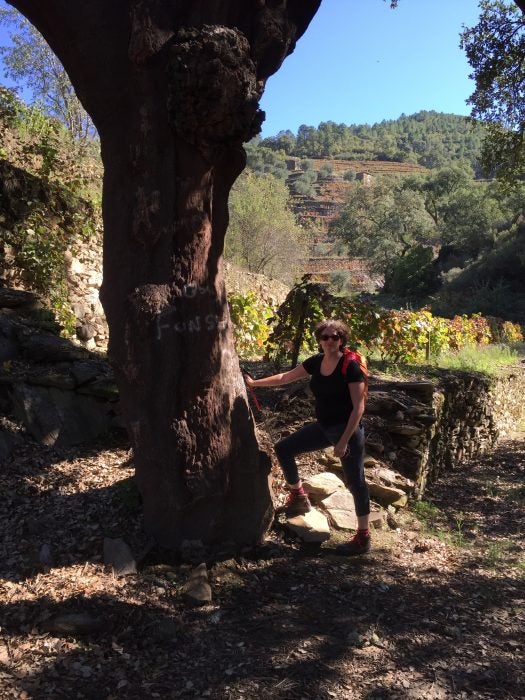If you’re a wine-drinker, you probably pay some attention to the wine you select, and perhaps even the bottle it comes in. But you may not spend much time thinking about the cork. For wine drinkers, corks are simply background, necessary for maintaining and quality of your favorite wine, otherwise only an obstacle to overcome. But corks are more than they seem. For one thing, corks come from a tree that is part of a unique ecosystem dependent on cork harvest for its survival.
Corks are made from cork oaks (Quercus suber), a tree species that only grows in a special habitat called cork oak savanna. This habitat consists of scattered cork oaks, sometimes mixed with other species, and a diverse understory, growing exclusively in coastal Mediterranean areas of Southern Europe and Northern Africa. These unusual environments support an exceptionally diverse population of butterflies, songbirds, and the critically endangered Iberian Lynx. The cork oak acorns support thousands of migratory birds.
The corks are made from a special dead tissue layer in the tree’s outer bark that evolved to protect the trees from fires. Every year the oaks, which can live up to 200 years, produce a new ring of cork. While most trees die if the bark is removed, in cork oaks the cork layer can be harvested from the tree again and again without harm. The first harvest occurs when the trees are around 30 years old, and is repeated every 9-12 years thereafter, a pattern that encourages mature trees. Removing the cork is skilled work, performed mostly by hand, and therefore provides a consistent income for workers.

For thousands of years, humans have been an essential part of the cork oak savanna ecosystem. Early humans helped shape the savannas through judicious use of fire. A crucial element of the cork harvest is removing shrubs, and modern cork managers rotate the sections of savannah that are harvested. The resulting patchwork landscape with different levels of vegetation contributes to the persistence of such high biodiversity.
Without removal, the savanna is quickly overrun by shrubs. Moderate fires are a natural part of the landscape, but excessive shrubs increase the incidence of severe, destructive wildfires that permanently alter the ecosystem. The higher plant diversity that thrives in the absence of shrubs helps drive the diversity of the entire system. In Northern Africa, the cork oaks suffer from degradation due to overexploitation by impoverished residents and few safeguards.
These forests now face a new threat: artificial corks. When cheaper plastic corks crowd out the market for traditional corks, the cork savanna goes unmanaged. The problem is exacerbated by a drain of young people away from the agricultural life. Without a robust cork market, the best hope for preserving the forests is a PES (Payment for Ecosystem Services) plan. Under a PES, users are paid directly for the environmental benefits that an intact forest provides, e.g. storing carbon. Leaving the trees intact stores carbon, Sustainable use benefits people and the environment; hopefully this partnership can persist.







